I have a 10mohm 1% resistor that I want to use to measure current. Since I need multiple ranges I want to use multiple amplifiers with different gains (INA212-Q1, INA213A-Q1, INA214-Q1) with the resistor and connect each output to a separate ADC pin on an MCU so that I can avoid any sort of analog switching on the shunt side which could distort readings or interfere with the load.

simulate this circuit – Schematic created using CircuitLab
My questions are:
- Is it sane to put multiple amplifiers on a shunt like this? And if not, which alternate scheme should I be looking at instead?
- How much will this affect the readings and the load?